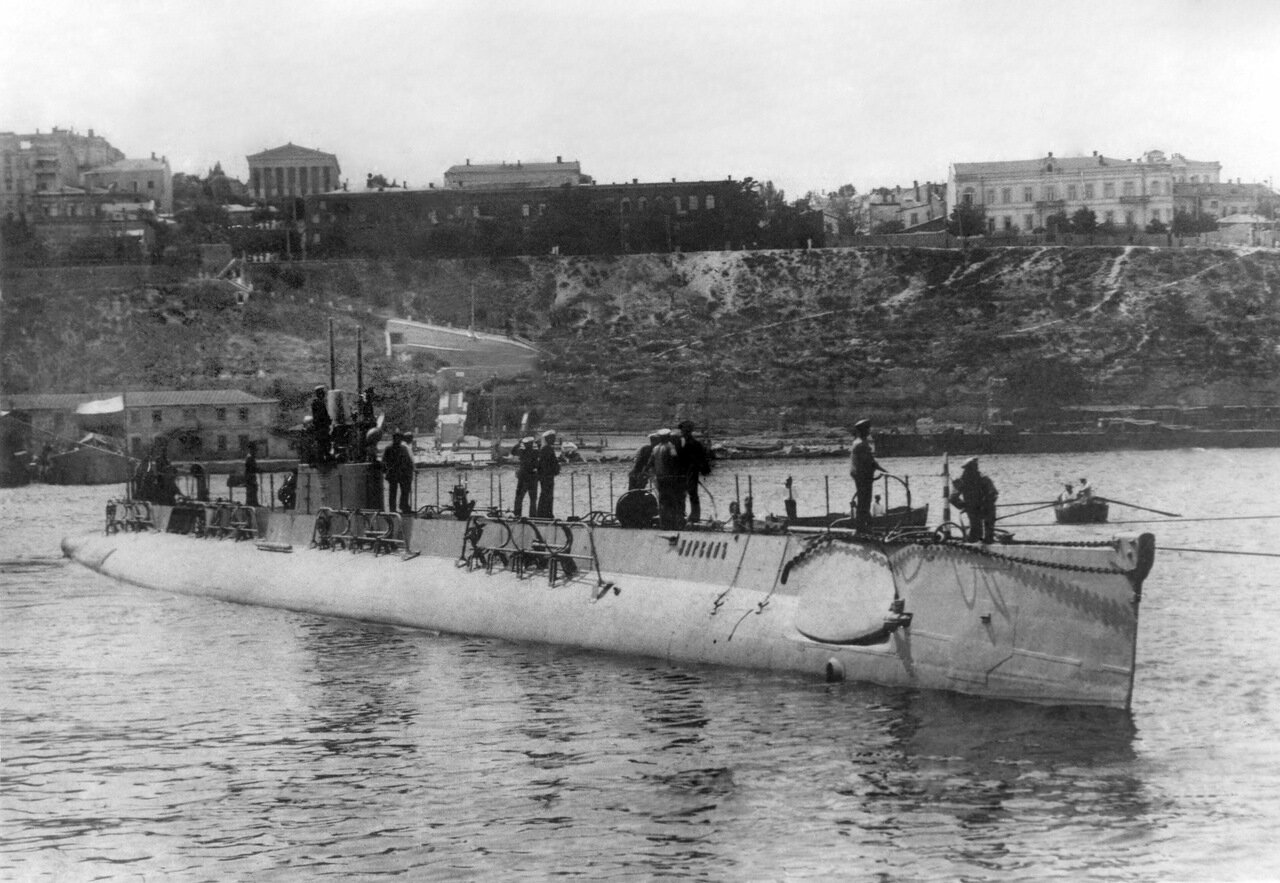Russian Narval-class Submarine on:
[Wikipedia]
[Google]
[Amazon]
The ''Narval'' class were a group of submarines built for the

Imperial Russian Navy
The Imperial Russian Navy () operated as the navy of the Russian Tsardom and later the Russian Empire from 1696 to 1917. Formally established in 1696, it lasted until being dissolved in the wake of the February Revolution and the declaration of ...
. They were designed by the Electric Boat Company
Electricity is the set of physical phenomena associated with the presence and motion of matter possessing an electric charge. Electricity is related to magnetism, both being part of the phenomenon of electromagnetism, as described by Maxwel ...
and ordered in the 1911 programme as the "Holland 31A" design (the Electric Boat company designation was EB31A). The Narval class had advanced features including watertight bulkheads, a crash diving tank and gravitationally filled ballast tanks which did not feature in contemporary Russian-designed boats. The boats were well regarded by the Russian Navy and served in the Black Sea Fleet
The Black Sea Fleet () is the Naval fleet, fleet of the Russian Navy in the Black Sea, the Sea of Azov and the Mediterranean Sea. The Black Sea Fleet, along with other Russian ground and air forces on the Crimea, Crimean Peninsula, are subordin ...
during World War I
World War I or the First World War (28 July 1914 – 11 November 1918), also known as the Great War, was a World war, global conflict between two coalitions: the Allies of World War I, Allies (or Entente) and the Central Powers. Fighting to ...
, during which they sank 8 merchant ships and 74 coastal vessels.
At the end of 1917, the submarines were transferred to the reserve. The submarines were scuttled by British forces in April 1919 near Sevastopol
Sevastopol ( ), sometimes written Sebastopol, is the largest city in Crimea and a major port on the Black Sea. Due to its strategic location and the navigability of the city's harbours, Sevastopol has been an important port and naval base th ...
.
Ships
Three submarines were built by Nikolayev Dockyard. ''Kit'' was raised by EPRON in 1934, but the hulls of the other two boats remain on the bottom in the place they were scuttled. The whereabouts of ''Narval'' was unknown until October 2014, though some historians believe it was virtually discovered by the Soviet underwater laboratory ''Bentos-300'' back in 1980. In June 2018, a joint expedition of theRussian Geographical Society
The Russian Geographical Society (), or RGO, is a learned society based in Saint Petersburg, Russia. It promotes geography, exploration and nature protection with research programs in fields including oceanography, ethnography, ecology and stati ...
's Sevastopol branch, the Ministry of Defence
A ministry of defence or defense (see American and British English spelling differences#-ce.2C -se, spelling differences), also known as a department of defence or defense, is the part of a government responsible for matters of defence and Mi ...
and Sevastopol State University was undertaken to examine the wreck of five submarines, including ''Narval'' and ''Kashalot'', by using a remotely operated underwater vehicle
A remotely operated underwater vehicle (ROUV) or remotely operated vehicle (ROV) is a free-swimming submersible craft used to perform underwater observation, inspection and physical tasks such as valve operations, hydraulic functions and other g ...
. It was reported in May 2019 that the wreck site is to be listed as a cultural heritage.

References
Bibliography
* * * Friedman, Norman, ''US Submarines through 1945: An Illustrated Design History'', Annapolis: Naval Institute Press, 1995, . * *External links
* {{DEFAULTSORT:Narval class submarine, Russian Submarine classes Submarines of the Imperial Russian Navy